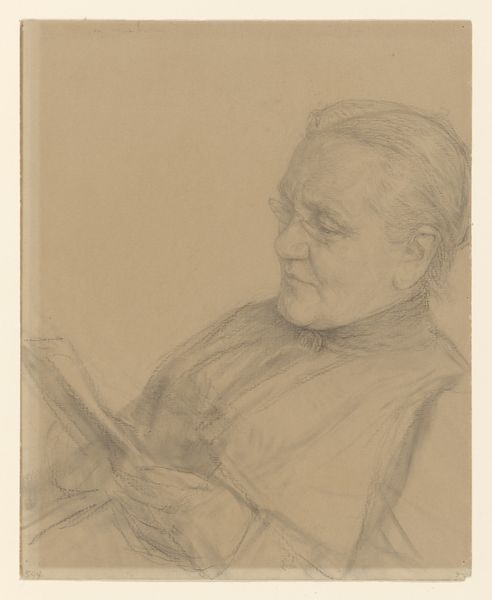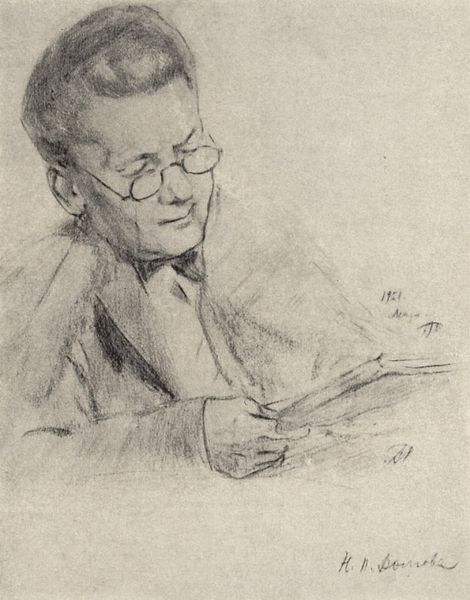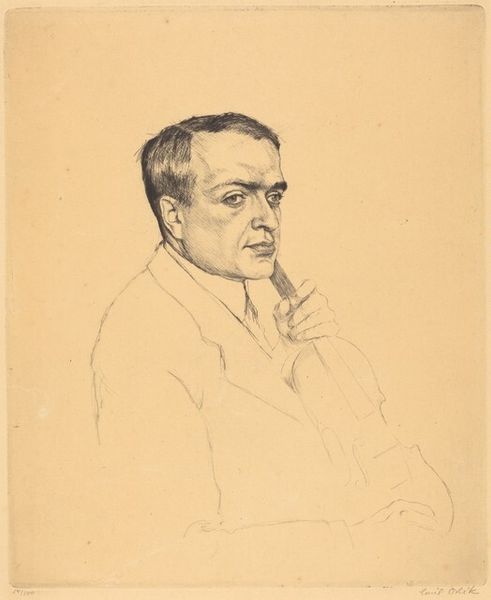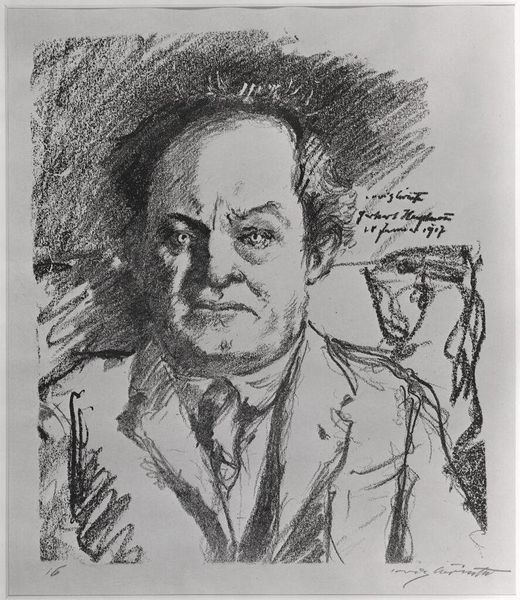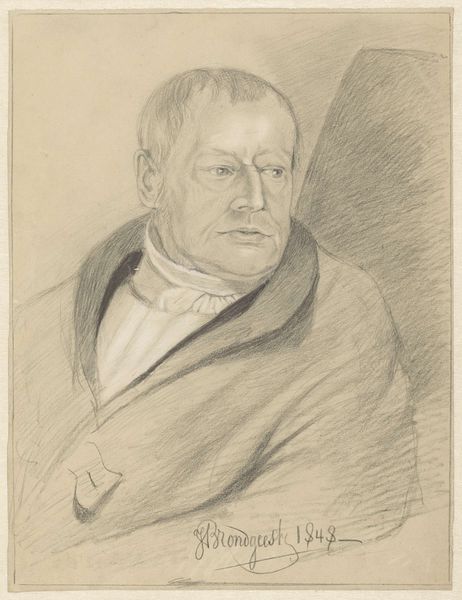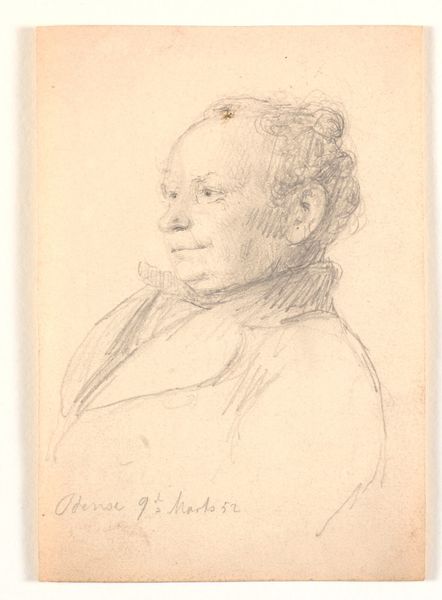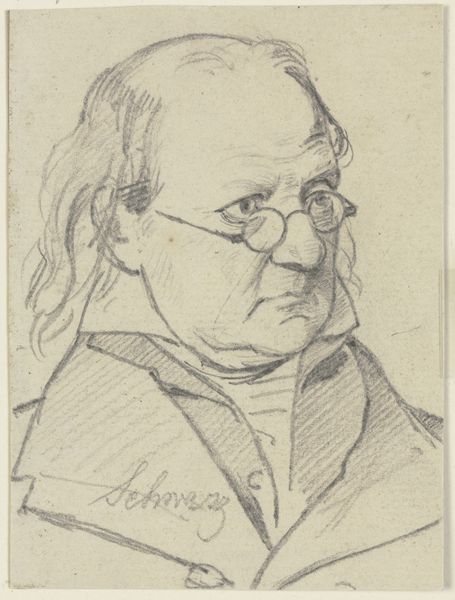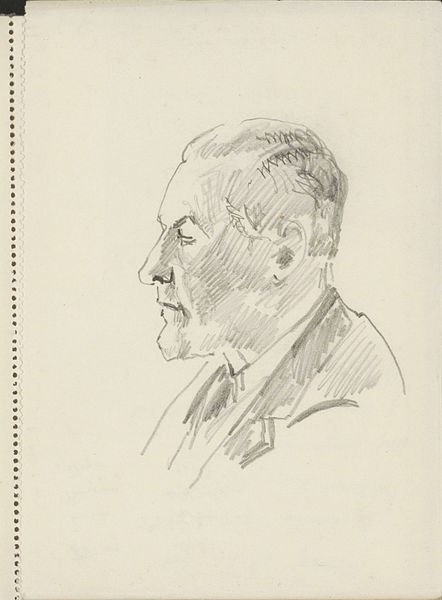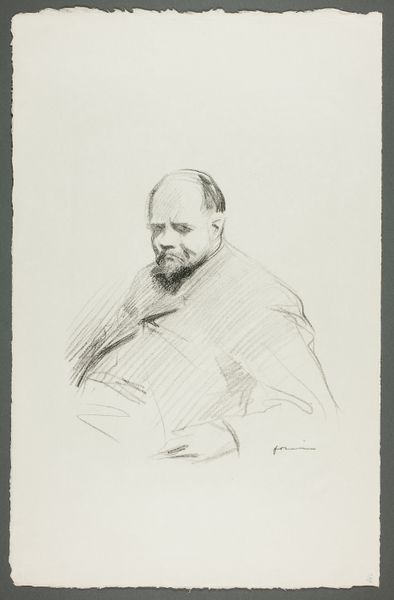
drawing, pencil
#
portrait
#
drawing
#
pencil sketch
#
portrait reference
#
pencil drawing
#
pencil
#
portrait drawing
#
academic-art
Copyright: Public domain
Editor: This is Émile Friant’s “Portrait of Jean-Louis Burtin” from 1928, rendered in pencil. It has a quiet, almost nostalgic feel to it, very intimate in its simplicity. What stands out to you when you look at this drawing? Curator: The immediacy, certainly. Friant captures more than likeness; he reveals an essence. Consider the circular spectacles, how they mirror and magnify the eyes—windows to the soul, as they say. Are we meant to see Burtin as intellectual, perhaps myopic in some way, or does it imply clarity of vision? Editor: That’s a fascinating point! I hadn't thought about the glasses as symbolic. I was focused on the gentle expression. Curator: Expressions are consciously or unconsciously ‘performed’, laden with convention. However, consider the line quality - thin and broken - and what is absent: context. Friant places Burtin within no definable space. Instead, he is presented out of time and place as an essence. Do you see how the gaze, slightly averted, creates a sense of introspection and vulnerability? What psychological space does it open? Editor: Yes, I see it now! It makes me wonder what Burtin was thinking, or what their relationship was like. It feels unfinished, somehow, like a moment captured. Curator: Precisely! We fill in the blanks based on our own experiences, our cultural understanding of portraiture. The cultural memory embedded in images such as this echoes across generations. Editor: That’s so interesting. I’ll definitely look at portraits differently from now on! Curator: And I will think about vision anew thanks to you. Thank you!
Comments
No comments
Be the first to comment and join the conversation on the ultimate creative platform.
